Answered step by step
Verified Expert Solution
Question
1 Approved Answer
The four lines observed in the visible emission spectrum of hydrogen tell us that a. Only certain energies are allowed for the electron in
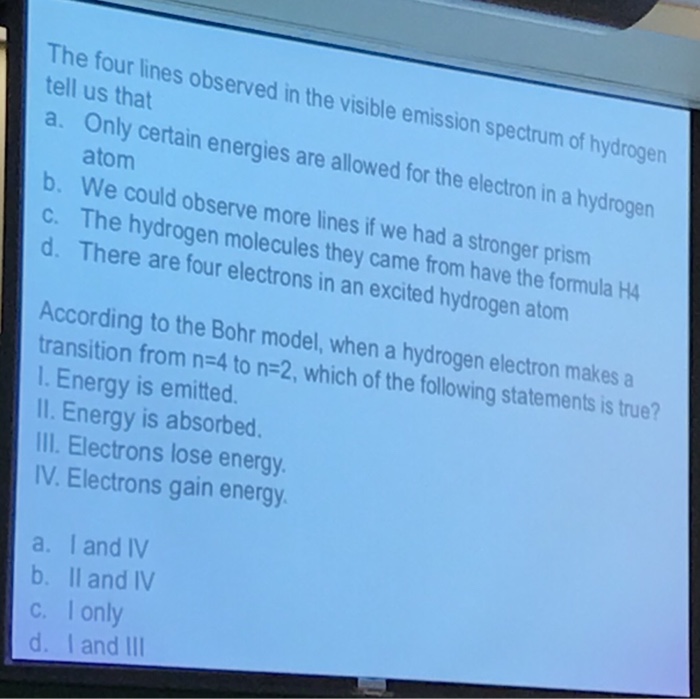
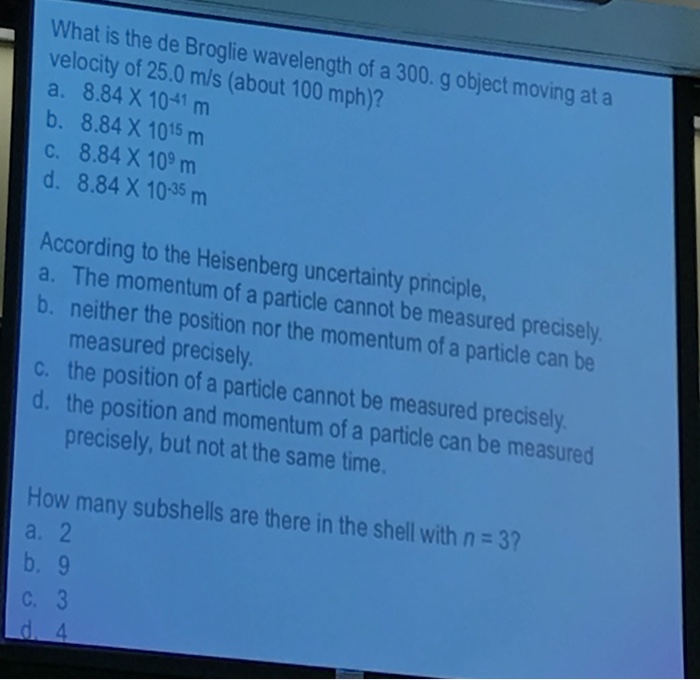
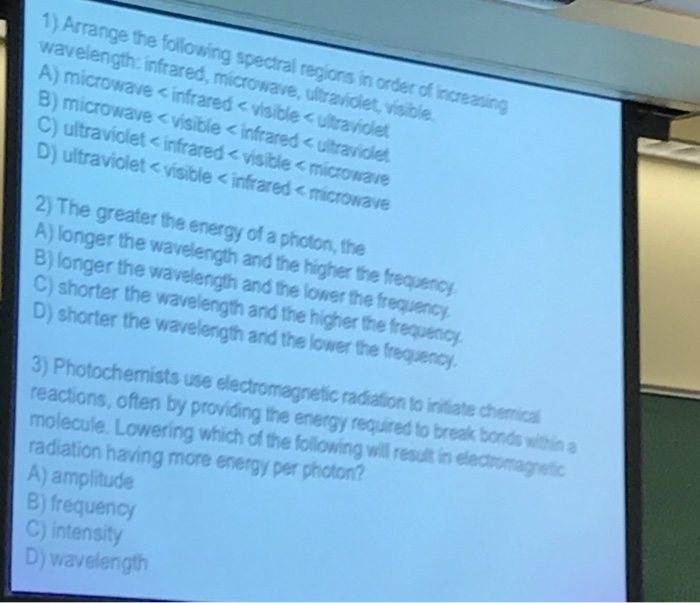
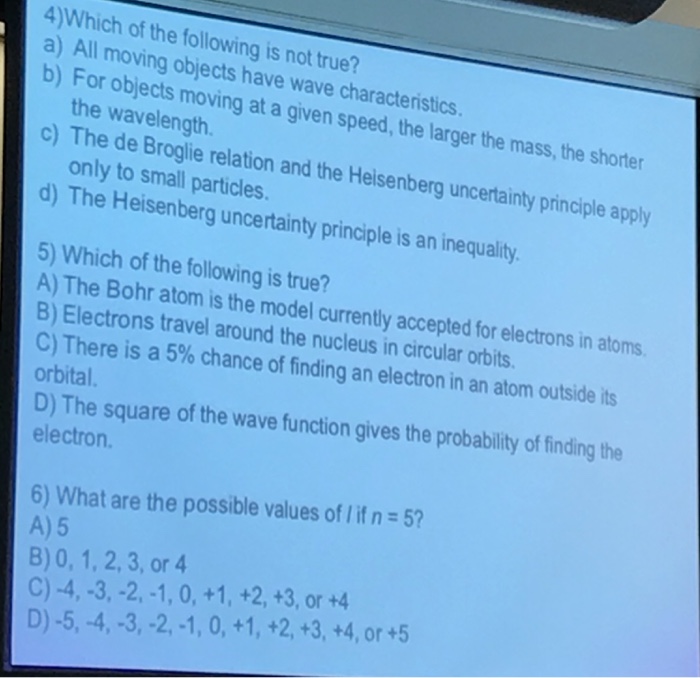
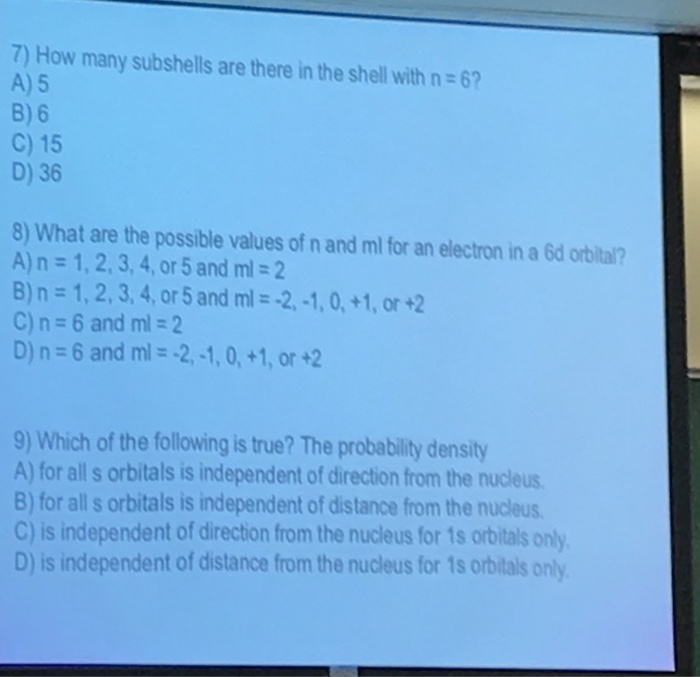
The four lines observed in the visible emission spectrum of hydrogen tell us that a. Only certain energies are allowed for the electron in a hydrogen atom b. We could observe more lines if we had a stronger prism c. The hydrogen molecules they came from have the formula H4 d. There are four electrons in an excited hydrogen atom According to the Bohr model, when a hydrogen electron makes a transition from n=4 to n=2, which of the following statements is true? 1. Energy is emitted. II. Energy is absorbed. III. Electrons lose energy. IV. Electrons gain energy. a. I and IV b. II and IV c. I only d. I and III What is the de Broglie wavelength of a 300. g object moving at a velocity of 25.0 m/s (about 100 mph)? a. 8.84 X 10-41 m b. 8.84 X 1015 m 8.84 X 109 m 8.84 X 10-35 m c. d. According to the Heisenberg uncertainty principle, a. The momentum of a particle cannot be measured precisely. b. neither the position nor the momentum of a particle can be measured precisely. c. the position of a particle cannot be measured precisely. d. the position and momentum of a particle can be measured precisely, but not at the same time. How many subshells are there in the shell with n = 3? a. 2 b. 9 C. 3 d. 4 1) Arrange the following spectral regions in order of increasing wavelength: infrared, microwave, ultraviolet, visible. A) microwave 4) Which of the following is not true? a) All moving objects have wave characteristics. b) For objects moving at a given speed, the larger the mass, the shorter the wavelength. c) The de Broglie relation and the Heisenberg uncertainty principle apply only to small particles. d) The Heisenberg uncertainty principle is an inequality. 5) Which of the following is true? A) The Bohr atom is the model currently accepted for electrons in atoms. B) Electrons travel around the nucleus in circular orbits. C) There is a 5% chance of finding an electron in an atom outside its orbital. D) The square of the wave function gives the probability of finding the electron. 6) What are the possible values of I if n = 5? A) 5 B) 0, 1, 2, 3, or 4 C) -4, -3, -2, -1, 0, +1, +2, +3, or +4 D) -5, -4, -3, -2, -1, 0, +1, +2, +3, +4, or +5 7) How many subshells are there in the shell with n=6? A) 5 B) 6 C) 15 D) 36 8) What are the possible values of n and ml for an electron in a 6d orbital? A) n = 1, 2, 3, 4, or 5 and ml = 2 B) n = 1, 2, 3, 4, or 5 and ml = -2, -1, 0, +1, or +2 C) n = 6 and ml = 2 D) n = 6 and ml = -2,-1, 0, +1, or +2 9) Which of the following is true? The probability density A) for all s orbitals is independent of direction from the nucleus. B) for all s orbitals is independent of distance from the nucleus. C) is independent of direction from the nucleus for 1s orbitals only. D) is independent of distance from the nucleus for 1s orbitals only.
Step by Step Solution
★★★★★
3.31 Rating (172 Votes )
There are 3 Steps involved in it
Step: 1
All th...
Get Instant Access to Expert-Tailored Solutions
See step-by-step solutions with expert insights and AI powered tools for academic success
Step: 2

Step: 3

Ace Your Homework with AI
Get the answers you need in no time with our AI-driven, step-by-step assistance
Get Started


